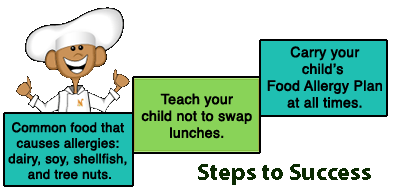Food Allergies and Children - Grocery Shopping Tips For Parents

The best way to manage food allergies is through prevention. Reading food labels during grocery shopping is one of the most important tasks required in preventing food allergies.
Don't assume that a food you've always eaten safely will have the same ingredients the next time you purchase it. Read the label each and every time you shop. If possible, have your children help you.
Due to some recent food allergy laws, all foods containing the top eight allergens (listed above) must clearly iden
tify the food in plain language on the package. All labels are to be marked so that a 7 year old can read and understand the ingredients. There are also some food products and brands that manufacture foods specifically for individuals with food allergies.
The name of the food source on a food label must appear in one of two ways:
1. In parentheses following the name of the ingredient, for example:
-
“flour (wheat)”
-
“whey (milk)”
-
“lecithin (soy)”
2. Immediately after or next to the list of ingredients in a “contains” statement. For example, “Contains wheat, milk and soy.”
Besides listing the top allergens, some companies also voluntarily include an allergy advisory label, such as the statements: “may contain traces of…” or “processed in the same plant as….”
Parents have commented to me about these statements on food products saying that it actually makes interpreting their meaning even harder than before because these labels are appearing on more and more products. It can be frustrating, but it is better to be safe than sorry. If a product has an allergy advisory label then it may contain the allergen (food causing the allergy) and should be avoided.
Healthy Eating

Healthy Child

Written by Michelle Mirizzi
•
Written on May 13, 2011
•
Last updated on Jun 13, 2014



0 Comments